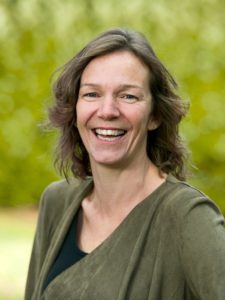Prof. Dr. Martina G. Vijver works at Leiden University, the Netherlands. Her research field is in Ecotoxicology. An important milestone in her research career was receiving a VIDI grant (2014) from NWO. The focus is on nano-ecotoxicology. She currently supervises eleven PhD-students, nine of whom have already defended their theses successfully. In 2017, she got the EU Horizon 2020 project PATROLS funded that aims to establish and standardize a battery of innovative, next generation physiologically anchored, hazard assessment tools that more accurately predicts adverse effects caused by long-term (chronic), low dose ENM exposure in human and environmental systems to support regulatory risk decision-making. Another milestone is the NWO ASPASIA grant (2013) that she received to quantify joint effects of mixtures of chemicals with low concentrations on aquatic communities. Prof. Vijver participates in eight different EU –FP7 and Horizon 2020 projects. She has over 110 peer reviewed scientific articles. She does a lot in outreach of the scientific results, performing in public lectures, giving tours and courses to school-children and having websites for the main public and for policy www.pnecpro.com and www.bestrijdingsmiddelenatlas.nl communicating about science. A notable award is the recently obtained World Cultural Council (WCC, 2017) Special Recognition Award, for research with an impact on society.
Read her full Emerging Investigator article “The dynamics of particle size distributions need to be accounted for in bioavailability modelling of nanoparticles” and read more about her in the interview below:
Your recent Emerging Investigator Series paper focuses on bioavailability modeling of nanoparticles and the impact of particle size distribution. How has your research evolved from your first article to this most recent article?
During my PhD (2005) I wrote a thesis entitled The Ins and Out of Bioaccumulation. This taught me that we should account bioavailability as a three step process in which exposure, uptake and toxicity are the principle processes that we need to understand. On top of that, each of these processes have their own dynamics. This is true for chemicals but also for nanomaterials. And currently we know that it is even more complex for nanomaterials because they are inherently a mixture of chemicals and colloids and that those come with different size distributions. Well that is a question to unravel step-by-step.
What aspect of your work are you most excited about at the moment?
That we could track non-modified metallic nanomaterials within alive organisms. That we are modelling the relative contribution of metal ions versus particles to account for the dynamics in exposure. This way we can start to understand the chemicals as well as the colloidal impacts in nano-ecotoxicology.
In your opinion, what is the biggest challenge in developing mechanistic-based modelling for nanoparticles?
The quantification of uptake, biodistribution over time to account explicitly for the correct dynamics in exposure.
What do you find most challenging about your research?
Long-term, low-level exposure of ecosystems to engineered nanomaterials will be the reality for many environments. Current approaches lack environmental realism in terms accounting fate, of dose delivery, exposure duration and uptake through food chains as well as ecological effects.
In which upcoming conferences or events may our readers meet you?
You can often find me at SETAC Europe.
How do you spend your spare time?
I spend my spare time with my 9 year old son and 6 year old daughter. I play tennis as a sport, and am the assistant coach of my son’s soccer team.
Which profession would you choose if you were not a scientist?
I am interested in many different jobs as long as it is creative.
Can you share one piece of career-related advice or wisdom with other early career scientists?
Follow your passion, and try to work with people who give you energy.
____________
Watch the clip below to hear Professor Vijver discuss her research aims on the dynamics of particle size distribution.












